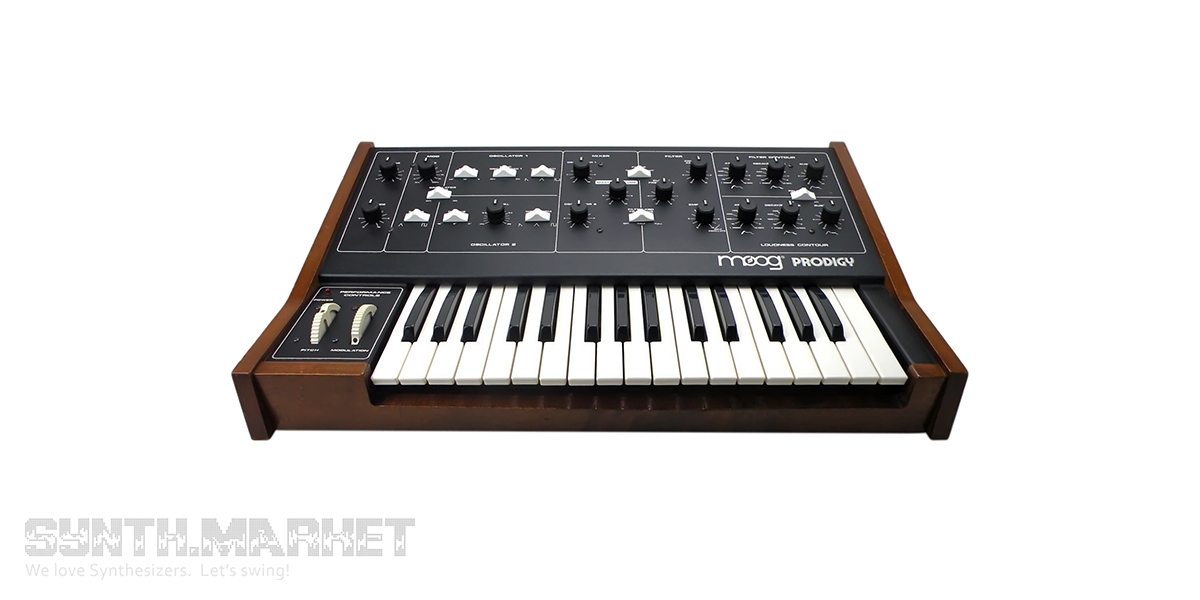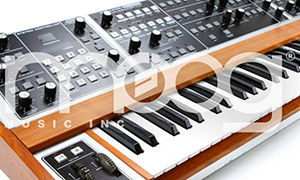Moog positioned Prodigy as an "entry-level synthesizer", the instrument was devised to familiarize newcomers with the world of synthesizers. But the history makes it obvious that this synthesizer is not only a toy, but also a device that in many ways determined the way many music genres sounded as well as defined the whole epoch of the 90’s. Bob Moog had nothing to do with the creation of Prodigy.
The synthesizer has two voltage-controlled oscillators, which can sound in unison, and in an interval and even within different octaves. The choice of the waveform is carried out with a three-position switch, sawtooth, triangular and square waveforms are available.
To create more complex sounds, a modulatable LFO is provided. It has a frequency adjustment and a waveform selection switch (triangle/meander). The LFO signal can also modulate the VCF. The modulation depth is controlled by the mod wheel located to the left of the keyboard.
The signal from the VCO gets mixed in the mixer section and sets the master volume. The mixer serves as a voltage controlled amplifier, which is controlled by the "loudness contour" envelope generator.
The synthesizer includes two envelope generators, one for VCF control, the second – for VCA. They’ve got adjustment for attack, pedestal, release time and sustain which can be switched off.
The filter section comprising a low-pass voltage-controlled filter is a classic Moog filter. It has adjustable cutoff frequency, resonance and modulation depth. The function of tracking the keyboard is activated by a three-position switch. The essence of this function is about higher notes having a higher cutoff frequency.
Moog Prodigy has been used by many artists, including: The Prodigy, Depeche Mode, Massive Attack, Fatboy Slim, Nine inch Nails, Rammstein, Blur.











